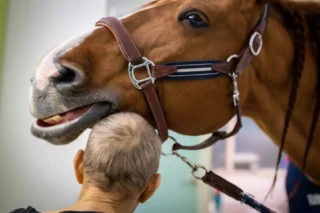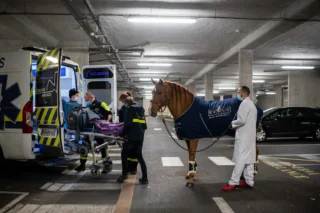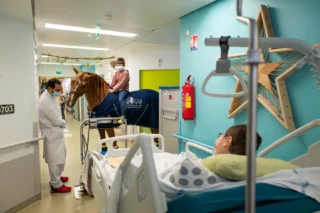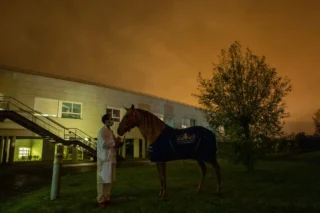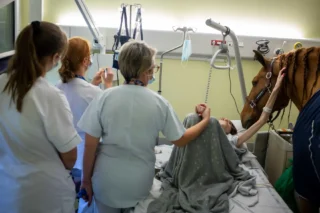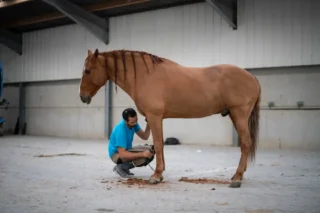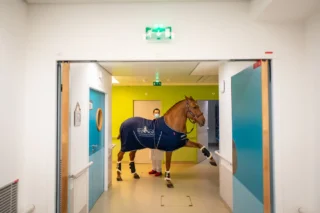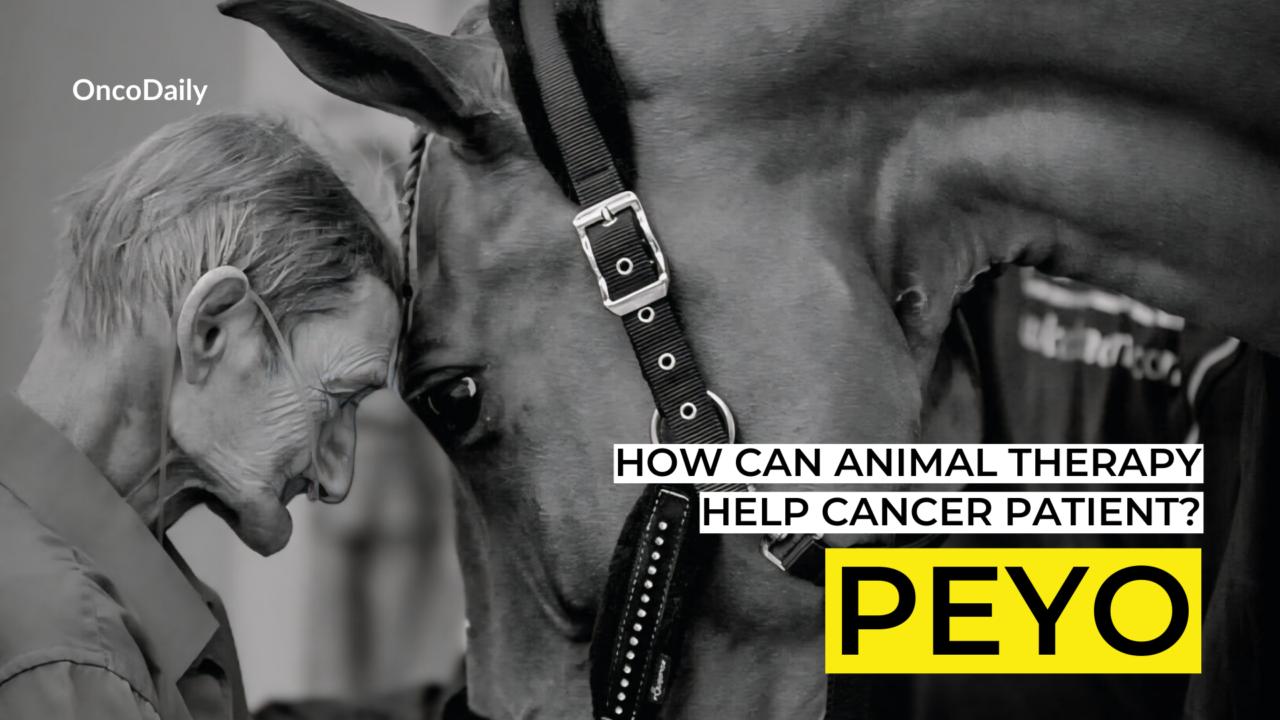
Peyo the Therapy Horse: Comforting Terminally Ill Patients Through Horse Therapy.
Peyo, a therapy horse once known for his success in equestrian sports, has now found a higher calling in comforting terminally ill patients. Along with his handler, Hassen Bouchakour, Peyo visits the palliative care center at Calais Hospital in northern France. Known as “Doctor Peyo” by the hospital staff, he is renowned for his ability to instinctively choose which patients to visit, often staying by their side during their final moments.
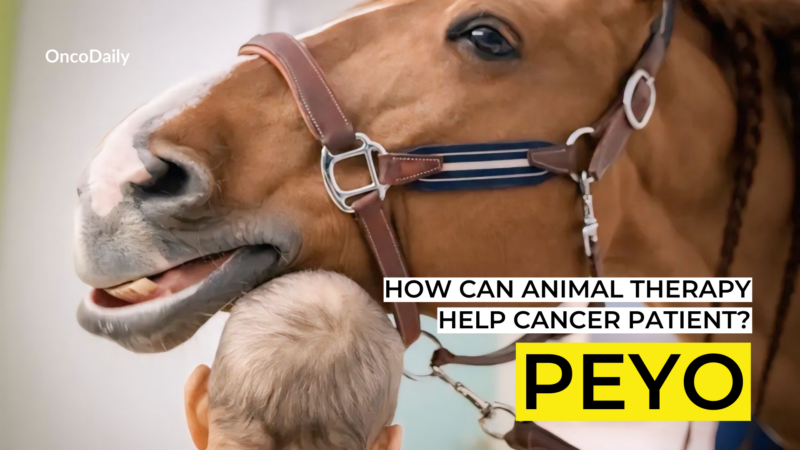
From Show Horse to Therapy Animal
Peyo’s transformation from competitive sport horse to therapy animal began when his handler noticed an unusual connection Peyo made with spectators. After performances, Peyo would seek out and stand by people who seemed to be physically or emotionally weakened. Bouchakour and scientists began to investigate Peyo’s behavior, discovering his unique ability to comfort those in need.
Peyo’s Role in Palliative Care and Reducing Anxiety
At Calais Hospital, Peyo works with patients battling cancer and other terminal illnesses. His visits have proven particularly beneficial in palliative care, where he helps patients and their families cope with the emotional challenges of end-of-life care. Peyo’s presence has been shown to reduce the need for pain medication, providing a sense of peace and comfort to patients.
According to Hassen Bouchakour, Peyo has supported nearly 1,000 people until their last breath, often staying in patients’ rooms for hours. His ability to detect when a patient is nearing death has fascinated scientists and medical professionals alike.
How Peyo and Animal Therapy Impacts Terminally Ill Patients
Peyo’s presence in healthcare settings has shown tangible benefits for patients:
- Calming Agitation: Peyo helps ease anxiety and restlessness in dementia patients.
- Reducing End-of-Life Anxiety: Palliative care patients often find comfort in his calming presence.
- Improving Emotional Well-being: Many patients report feeling happier and less stressed after interacting with Peyo.

Source: The Guardian
The Science Behind Animal Therapy
Animal-assisted therapy, though not a substitute for medical treatment, offers significant emotional and psychological benefits. Research highlights how therapy animals can improve the quality of life for patients with serious illnesses:
- Stress Reduction: Patients report a 30-40% decrease in stress levels after therapy sessions (Journal of Psychosocial Oncology, 2015).
- Improved Mood: Up to 70% of participants experience better moods and reduced depressive symptoms.
- Higher Patient Satisfaction: About 80% of cancer patients involved in animal therapy report increased satisfaction with their care.

Source: The Guardian
What is Animal Therapy?
Animal therapy, also known as animal-assisted therapy (AAT), is a targeted therapeutic intervention where trained animals, such as dogs, horses, or cats, are used to support the physical, emotional, and psychological recovery of individuals. It involves guided interaction between the patient and the therapy animal to achieve specific health outcomes, such as reducing stress, lowering blood pressure, alleviating symptoms of depression, or improving motor skills. Animal therapy is commonly used in settings like hospitals, mental health clinics, rehabilitation centers, and nursing homes, and is beneficial for patients with conditions ranging from PTSD to physical disabilities.
Common Animals in Therapy
While Peyo is a standout in equine therapy, many other animals play similar roles in healthcare settings:
- Dogs: Provide companionship and emotional support.
- Cats: Offer a calming presence.
- Horses: Used in equine therapy for emotional healing and physical therapy.
- Rabbits and Birds: Low-maintenance animals that provide emotional relief.
Future of Animal-Assisted Therapy
Peyo’s success has opened doors for further research in areas such as:
- Understanding the physiological effects of animal-human bonding
- Standardizing therapy protocols for animals
- Long-term impacts of animal therapy on patient outcomes and healthcare costs
Emotional Support for Staff and Families
Peyo doesn’t just help patients—he provides comfort to medical staff and families as well. Nurses at the hospital have noted how his presence lifts their spirits during challenging days. As one nurse shared, “When things are tough, we’re happy to know Peyo and Hassen are here. It makes all the difference.”
FAQs About Peyo the Therapy Horse
Who is Peyo?
Peyo is a therapy horse known for his remarkable ability to comfort and connect with people, particularly those who are ill, elderly, or in palliative care.
What is horse therapy, and how does it differ from traditional animal therapy?
Horse therapy, also known as equine therapy, involves interactions with horses to promote emotional, psychological, and physical well-being. Unlike traditional animal therapy with pets like dogs or cats, equine therapy focuses on building trust, communication, and emotional healing through working with larger animals like horses.
How do therapy horses like Peyo sense a patient’s emotional or physical needs?
Therapy horses like Peyo have a heightened sensitivity to human emotions and physical states. While the exact mechanism is not fully understood, experts believe horses respond to subtle changes in human behavior, body language, and energy, which helps them intuitively offer comfort.
Can therapy animals help reduce the need for medication in palliative care?
Yes, therapy animals like Peyo have been shown to help reduce anxiety, stress, and pain in palliative care patients, often lowering the need for pain medications and allowing for a more peaceful experience during end-of-life care.
Are therapy horses used for other medical conditions besides terminal illnesses?
Yes, therapy horses are also used in treatments for mental health issues, physical disabilities, autism, PTSD, and rehabilitation from traumatic injuries. Equine therapy helps patients develop emotional resilience and improve physical mobility.
How is animal-assisted therapy integrated into cancer care?
Animal-assisted therapy is used in cancer care to provide emotional support to patients during treatment. Therapy animals can reduce anxiety before procedures, help manage stress during recovery, and improve the overall well-being of cancer patients.
What is the difference between animal-assisted therapy and service animals?
Animal-assisted therapy involves animals visiting patients in various settings to offer emotional and psychological support, while service animals are trained to perform specific tasks to aid individuals with disabilities, such as guiding the visually impaired or alerting people with epilepsy to seizures.
Can therapy horses like Peyo help children in hospitals?
Yes, therapy horses like Peyo provide significant emotional support to children in hospitals. They can help ease anxiety, provide companionship, and create positive interactions that make the hospital experience less stressful for young patients.
How do therapy animals improve staff well-being in healthcare settings?
Therapy animals, including horses, help reduce stress and burnout among healthcare staff by offering emotional relief and creating a positive, calming environment. Their presence can lift the spirits of nurses, doctors, and caregivers who work in high-stress environments like palliative care units.
How are therapy animals trained to work in hospitals?
Therapy animals undergo specialized training to become comfortable in healthcare environments. They are trained to remain calm, follow commands, and interact gently with patients, especially those with medical equipment or in vulnerable health states.
Written by Aharon Tsaturyan, MD
-
ASCO Annual Meeting
May 30 - June 4, 2024
-
Yvonne Award 2024
May 31, 2024
-
OncoThon 2024, Online
Feb. 15, 2024
-
Global Summit on War & Cancer 2023, Online
Dec. 14-16, 2023

